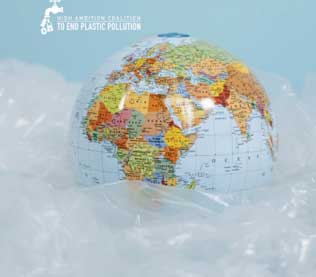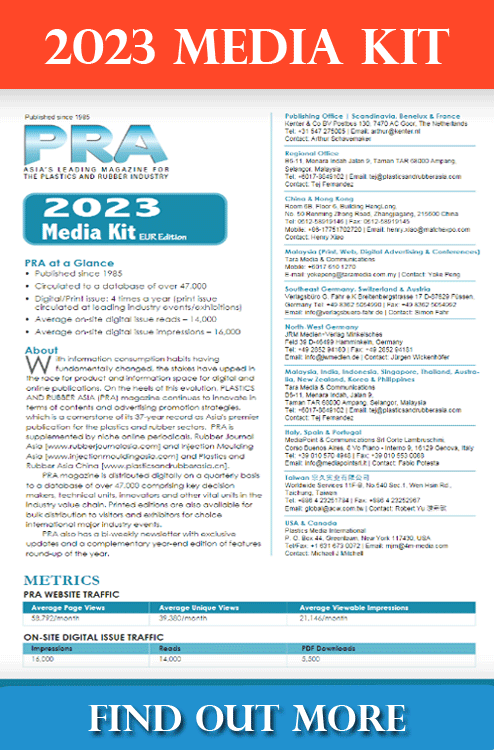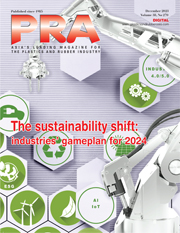Biomaterials: wonder materials that are beyond plastics
With the ever increasing focus on environmental sustainability, the world faces a pressing need to tackle the ecological impact caused by extensive plastic use. Biomaterials are beginning to emerge as a promising solution to address this challenge, according to Angelica Buan.
Too much of plastics

The global food packaging market is on an upward trajectory, projected to soar from nearly US$1.2 trillion in 2023 to surpass US$1.4 trillion by 2028, as reported in Smithers’ The Future of Global Packaging to 2028. Asia commands the largest market share, accounting for US$470 billion of world packaging sales in 2023, followed by North America with US$270 billion and Western Europe with US$234 billion.
However, alongside its rapid growth, a challenge beyond economic conditions and supply chain disruptions is emerging ie. sustainability. The Organisation for Economic Cooperation and Development (OECD) report, Towards Eliminating Plastic Pollution by 2040, under scores that the current business-as-usual scenario — marked by relentless plastics demand, waste generation, and mismanagement — is unsustainable. Without ambitious, coordinated, and global policy action, this trend will persist, perpetuating the increase in plastic waste.
Over the last two decades, plastics production has more than doubled and is projected to surpass 1.2 billion tonnes/year by 2060. The report also foresees a proportional rise in plastics leaking into rivers and oceans, estimated to soar from 6 million tonnes in 2020 to over 9 million tonnes. This exponential increase in plastic usage and waste volume will significantly amplify adverse consequences for the environment, climate, and health.
Despite anticipated improvements in waste collection and recycling, plastics use and waste are predicted to surge by over 50% above 2020 levels by 2040. While advances in waste management will reduce plastic leakage, an estimated 23 million tonnes is still expected to escape into the environment by 2040.
Treaty to curb plastics consumption
Targeting the elimination of plastic pollution, the High Ambition Coalition to End Plastic Pollution (HAC), consisting of 62 Ministers from various nations, has been formed to create policies and strategies for a circular plastics economy. It aims to eliminate plastic pollution by 2040 through an ambitious treaty that manages the entire life cycle of plastics, safeguarding human health and the environment.

The HAC’s global strategic objectives include restraining plastic consumption and production to sustainable levels; establishing a circular economy for plastics that safeguards the environment and human health; and achieving environmentally sound management and recycling of plastic waste.
The group aims to achieve specific goals that include banning harmful plastics, creating global sustainability standards, setting worldwide targets for sustainable plastic use, ensuring transparency in plastic production, improving commitments and controls over time, monitoring every stage of plastic use, and providing support for technical and financial assistance and assessments.
Is US’s biomanufacturing agenda the right step?
According to HAC, plastics use has skyrocketed in the last 30 years. A major part of this growth comes from making more single-use plastics for packaging and consumer goods, causing half of the plastic waste.
As the negative impacts of single-use plastics become more evident, researchers are increasingly exploring alternatives such as biomaterials, derived from plants, bacteria, and fungi, offering promising substitutes for conventional plastics.

The administration of US President Joe Biden and Vice President Kamala Harris has highlighted biomaterials as part of an effort to enhance American biotechnology and global manufacturing. As one of the leading consumers of plastics, the country’s Department of Defense's investment of US$1.2 billion in bioindustrial infrastructure is expected to bolster stronger supply chains and innovation.
This strategy spans across various sectors such as plastics, fuels, medicines, addressing concerns related to health, climate change, energy, food security, and national safety.
As part of the biomanufacturing strategy, scientists are developing eco-friendly alternatives to regular plastics, utilising materials from plants, algae, or microorganisms. These biomaterials easily decompose in nature, lessening the impact of plastic waste.
However, Greenpeace USA’s plastics project highlights a disparity. Despite the Biden administration taking initial steps to address plastic pollution, the project suggests that the plan lacks comprehensiveness.
It implies that by concentrating on bioplastics and recycling, the administration may not be tackling the root cause. Instead, advocating for reducing the production of single-use plastics and advocating for a shift towards refillable and reusable systems are seen as more viable solutions. The reasoning is that solely relying on recycling and material substitution may not effectively resolve the primary concern of plastic pollution.
(PRA)
Subscribe to Get the Latest Updates from PRA Please click here
©2023 Plastics and Rubber Asia. All rights reserved.

©2023 Plastics and Rubber Asia. All rights reserved.
Home Terms & Conditions Privacy Policy Webmail Site Map About Us
















